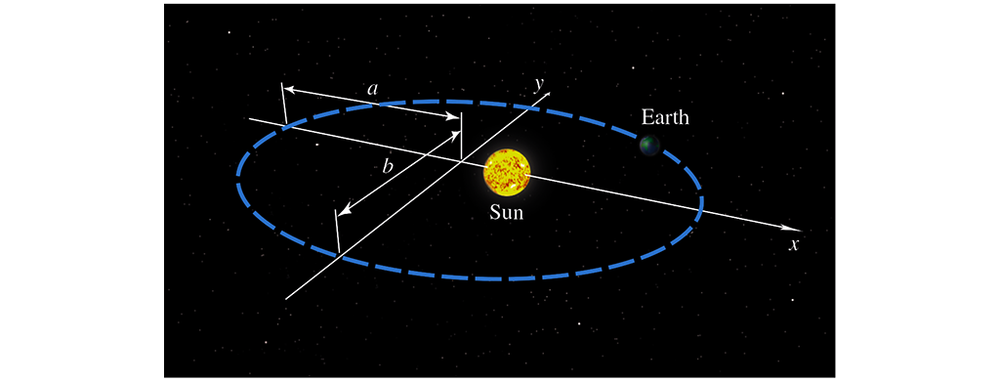Average height of a wave The surface of a water wave is described by y = 5 (1 + cos 𝓍) , for ― π ≤ 𝓍 ≤ π, where y = 0 corresponds to a trough of the wave (see figure). Find the average height of the wave above the trough on [ ―π , π] .
Table of contents
- 0. Functions7h 54m
- Introduction to Functions16m
- Piecewise Functions10m
- Properties of Functions9m
- Common Functions1h 8m
- Transformations5m
- Combining Functions27m
- Exponent rules32m
- Exponential Functions28m
- Logarithmic Functions24m
- Properties of Logarithms36m
- Exponential & Logarithmic Equations35m
- Introduction to Trigonometric Functions38m
- Graphs of Trigonometric Functions44m
- Trigonometric Identities47m
- Inverse Trigonometric Functions48m
- 1. Limits and Continuity2h 2m
- 2. Intro to Derivatives1h 33m
- 3. Techniques of Differentiation3h 18m
- 4. Applications of Derivatives2h 38m
- 5. Graphical Applications of Derivatives6h 2m
- 6. Derivatives of Inverse, Exponential, & Logarithmic Functions2h 37m
- 7. Antiderivatives & Indefinite Integrals1h 26m
- 8. Definite Integrals4h 44m
- 9. Graphical Applications of Integrals2h 27m
- 10. Physics Applications of Integrals 3h 16m
- 11. Integrals of Inverse, Exponential, & Logarithmic Functions2h 34m
- 12. Techniques of Integration7h 41m
- 13. Intro to Differential Equations2h 55m
- 14. Sequences & Series5h 36m
- 15. Power Series2h 19m
- 16. Parametric Equations & Polar Coordinates7h 58m
8. Definite Integrals
Average Value of a Function
Problem 5.4.46a
Textbook Question
Planetary orbits The planets orbit the Sun in elliptical orbits with the Sun at one focus (see Section 12.4 for more on ellipses). The equation of an ellipse whose dimensions are 2a in the 𝓍-direction and 2b in the y-direction is (𝓍²/a²) + (y² /b²) = 1.
(a) Let d² denote the square of the distance from a planet to the center of the ellipse at (0, 0). Integrate over the interval [ ―a, a] to show that the average value of d² is (a² + 2b²) /3 .

 Verified step by step guidance
Verified step by step guidance1
Step 1: Begin by recalling the equation of the ellipse: (𝓍²/a²) + (y²/b²) = 1. This represents the elliptical orbit of the planet with semi-major axis 'a' and semi-minor axis 'b'.
Step 2: The square of the distance from the planet to the center of the ellipse is given by d² = 𝓍² + y². Substitute y² from the ellipse equation into this expression: y² = b²(1 - 𝓍²/a²). Thus, d² = 𝓍² + b²(1 - 𝓍²/a²).
Step 3: Simplify the expression for d²: d² = 𝓍² + b² - (b²𝓍²/a²). Combine terms to get d² = (1 - b²/a²)𝓍² + b².
Step 4: To find the average value of d² over the interval [−a, a], use the formula for the average value of a function: (1/(a - (-a))) ∫[−a, a] d² d𝓍. This simplifies to (1/(2a)) ∫[−a, a] [(1 - b²/a²)𝓍² + b²] d𝓍.
Step 5: Break the integral into two parts: (1/(2a)) [∫[−a, a] (1 - b²/a²)𝓍² d𝓍 + ∫[−a, a] b² d𝓍]. Evaluate each integral separately, noting that ∫[−a, a] 𝓍² d𝓍 = (2/3)a³ and ∫[−a, a] d𝓍 = 2a. Combine results to show that the average value of d² is (a² + 2b²)/3.
 Verified video answer for a similar problem:
Verified video answer for a similar problem:This video solution was recommended by our tutors as helpful for the problem above
Video duration:
6mPlay a video:
Was this helpful?
Key Concepts
Here are the essential concepts you must grasp in order to answer the question correctly.
Elliptical Orbits
Elliptical orbits describe the paths that celestial bodies, such as planets, take around a focal point, like the Sun. An ellipse is defined by its semi-major axis (a) and semi-minor axis (b), with the Sun located at one of the foci. Understanding the properties of ellipses is crucial for analyzing planetary motion and calculating distances within these orbits.
Average Value of a Function
The average value of a function over a given interval is calculated by integrating the function over that interval and then dividing by the length of the interval. In this context, the average value of the square of the distance from a planet to the center of the ellipse is derived through integration, which provides insights into the planet's position relative to the Sun over its orbital path.
Recommended video:

Average Value of a Function
Integration
Integration is a fundamental concept in calculus that involves finding the accumulated area under a curve represented by a function. In this problem, integration is used to compute the average value of the squared distance from the center of the ellipse, which requires setting up the appropriate integral and evaluating it over the specified interval. Mastery of integration techniques is essential for solving problems related to areas, volumes, and averages in calculus.
Recommended video:

Integration by Parts for Definite Integrals

 6:37m
6:37mWatch next
Master Average Value of a Function with a bite sized video explanation from Patrick
Start learningRelated Videos
Related Practice
Textbook Question
17
views
